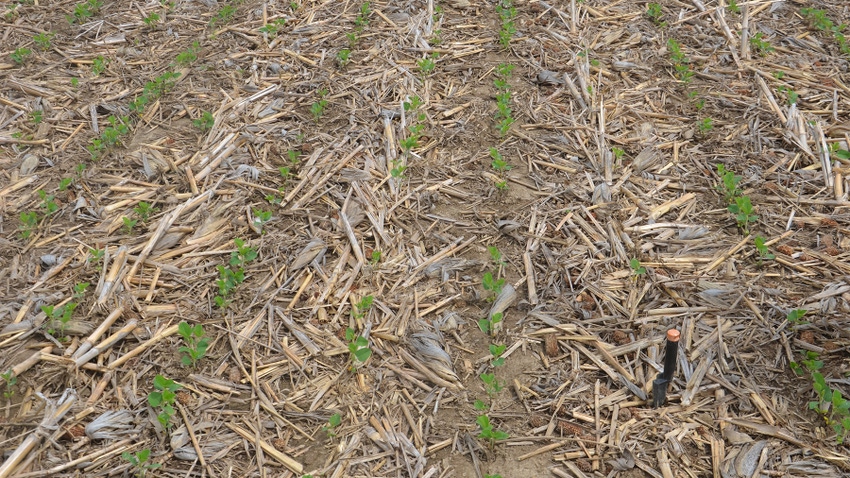April 26, 2024

We dropped back to 120,000 seeds per acre in 15-inch soybean rows, and weather didn’t cooperate. In one field, we have 75,000 to 85,000 plants per acre on one half and 65,000 to 75,000 plants on the other. Assume we can’t get back in until June 5. Should we tear it up and replant? Plant in more beans? Or just leave it alone?
The Indiana certified crops adviser panel answering this question includes Danny Greene, Greene Crop Consulting, Franklin; Abby Horlacher, Nickle Plate Consulting, Frankfort; and Brian Mitchem, Farmer 1st Agronomy Consulting Services, Decatur.
Greene: Replanting decisions can be agonizing. They involve destroying at least some of what you have in hopes that you get more. Give some weight to any crop insurance support from a replant claim or the guarantee from your policy.
In addition to stand count, focus on uniformity of stand, plant health, soil type and calendar date. If soybeans were planted in April to mid-May with uniform 65,000 to 75,000 stands that are healthy, consider leaving it alone.
If planted mid-May or later, or if the stand doesn’t look healthy, consider planting an additional half rate at an angle. If the poorest stand areas are getting worse or are on tough soils like clay knobs or sandy soils, consider a full rate. Limit weed competition with higher population and narrow rows to close the canopy sooner. Higher populations will encourage taller plant height and more nodes.
Horlacher: If you are going to drop more soybeans into an existing stand, you need to do this as close to the cotyledon stage as possible so you don’t create competition between plants. Since you can’t get in until June 5, that rules out planting a half rate by the existing row. So, do you tear it up or keep the stand?
On average, you have a consistent stand over 65,000. A consistent stand allows you to make an easy decision and keep the stand. The lower population will allow soybeans to put on more branches and inevitably keep more pods on the plant. Leaving the stand is the better option because of wet soils and time of year.
Mitchem: We are learning quite a bit about population dynamics and plant competition. Recent information sheds light on replant decisions. There is also an art to the science. Beans have an amazing ability to compensate for yield in lower populations. We are gaining a better understanding of far-red light interception from competitive plants and the impact on neighbors. Far-red light is absorbed by the chlorophyll of a living plant. When sensed by the crop, it can limit yield potential.
We can achieve maximum yield with uniform stands of 50,000 plants per acre at normal planting dates. It’s the uniform part that is the art. Weed control provided by plant competition should also be considered. Thin beans are not as aggressive at outcompeting weeds. If the field has more weed control risk, you may adjust by adding an additional layer of herbicide.
Here, stands are above the minimum. Only thin spots should be adjusted by adding more seeds. Since the planting window is assumed to be mid-June, a higher population is desired. Consider a seeding rate of 100,000 plants in the thin areas.
Read more about:
ReplantYou May Also Like




